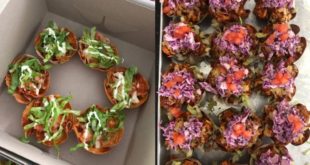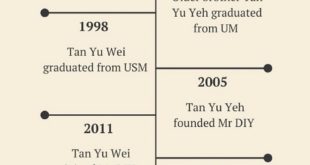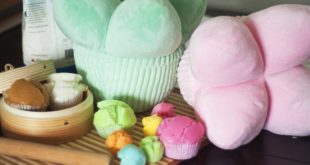For years, OSIM has been a household name in Asia, known for their luxury massage chairs.
Recently, OSIM even launched a gaming massage chair in collaboration with Predator that took the internet by storm.
The man behind OSIM is Singapore-born Ron Sim, who has an estimated net worth of US$ 1.3 billion.
He is currently the 28th richest man in Singapore but his spot on Forbes’ Singapore’s 50 Richest list has fluctuated over the years due to successes and failures.
From a child who sold prawn noodles to make ends meet to becoming a tycoon with a business empire, here’s how he amassed his fortune.
From Rags To Riches
Like many in his era, Ron was born into a family of modest means.
The billionaire’s childhood was spent taking up menial jobs, including selling prawn noodles and working as a waiter to support his family, of which he was one of seven siblings.
Graduating with only an O-level certificate, the entrepreneur launched a business immediately after completing National Service in 1979.
“It’s not easy to get a job (in Singapore at that time)… and the pay is terrible so you’ve got to figure out something for yourself,” recounted the billionaire on a radio show.
The initial years of the business were bumpy. Ron’s first company specialised in household goods but closed down after a recession in 1985.
In 1987, Ron re-entered the industry with a wellness brand. Called Health Check & Care, it grew into a prolific franchise with 10 outlets across Singapore, Hong Kong and Taiwan.
In 1994, the company rebranded to OSIM, a lifestyle and wellness brand famed for its Japanese shiatsu-style luxury massage chairs.

OSIM went public in 2000, selling over 25 per cent of its shares in a deal that valued the company at S$ 71 million.
In 2013, OSIM reportedly generated over S$ 648 million in annual revenue and hit a S$ 908 million market cap in 2016.
OSIM was dubbed as one of the top 10 massage chair brands in the world with over 413 outlets in 88 cities, according to UK-based research firm TechNavio.
A Series Of Acquisitions
Ron didn’t stop at OSIM as he embarked on a series of business acquisitions under an umbrella conglomerate, OSIM International.
The goal was to capture the “mass affluent” — a demographic with the type of high discretionary spending power that could afford OSIM’s luxury lifestyle and wellness products.
OSIM acquired ONI Global for approximately S$ 10 million in 2003 and now owns a 90 per cent stake in the firm. ONI Global owns a stake in the Southeast Asian franchise of US-based health supplement chain GNC Wellness.
Ron’s next move was to subsume the then-relatively-unknown luxury tea brand, TWG Tea under OSIM. At that point, TWG Tea, which only had three shops in Singapore, was losing S$ 2 million per year.

Despite the firm’s shortfalls and the protests of his shareholders, Ron purchased a 35 per cent stake in TWG Tea in 2008 and bumped its stake up to 70 per cent over the next two years.
Within the next five years, TWG Tea’s annual sales exploded from S$ 1 million to S$ 55 million a year.
In 2017, the firm reported a S$ 600 million annual revenue, with surges in profit. Currently, TWG Tea has outlets in 22 countries across North America, Europe and the Asia Pacific.
Ron’s latest acquisition is a 75 per cent stake in store fixtures specialist, Futuristic. The brand has worked with over 50 global retail brands like Victoria’s Secret, Levi’s and BVLGARI, serving over 75,000 stores globally.
After OSIM acquired the firm in 2017, Futuristic recorded annual revenue of S$ 70 million in 2016, and a compound annual growth rate of more than 20 per cent over the past three years.
A Fair Share Of Business Setbacks
Despite his successes, Ron has had his fair share of setbacks over the years.

OSIM bought a 55 per cent stake in specialty products store Brookstone in 2005 for US$ 450 million in partnership with Temasek and J.W Childs.
By 2006, OSIM swung into a quarterly loss after Brookstone was beset by a wave of crippling losses.
In 2009, OSIM took a US$ 100 million write-down on its stake in the US-based firm. By 2014, Brookstone filed for bankruptcy, two months after it defaulted on debt.
Despite writing off Brookstone, OSIM’s growth continued to plunge between 2012 to 2016.
OSIM, which accounted for the lion’s share of the group’s revenue, experienced a decline in sales from 15 per cent to negative 13 per cent between 2012 and 2015.
The massage chair business generated just S$ 342 million in 2016, half the annual revenue generated in 2013. The group’s second subsidiary, GNC also saw negative 3 per cent growth in 2016.
The same year, DBS reported that OSIM was experiencing poor earnings with no dividends for its shareholders, a product of higher operating costs and lower sales from reduced stores.
Ron promptly decided to take OSIM private. In August 2016, Ron, who already owned 68.31 per cent of OSIM, offered investors S$ 1.39 per share to delist OSIM from SGX.
The re-acquisition of OSIM under a new conglomerate, V3, cost the billionaire over S$ 1 billion and necessitated over S$ 321.9 million in loans.
A year later, Ron announced a pivot to an IPO in Hong Kong, citing lighter compliance costs as the pull factor for the relisting. However, the plan was later aborted in 2018 amidst “intense volatility” in the stock market.
The billionaire shared with Forbes in 2019 that it has no plans to list the firm in the near future.
Gearing Up For The Next 10 Years
Since the pandemic, retail has been suffering and the after-effects of COVID-19 may be wreaking yet-unreported havoc on the billionaire’s empire.
In June 2020, GNC declared bankruptcy in the US and announced plans to close at least 800 of its 7,300 stores.
Though it’s unclear how that will affect the retail giant’s presence in Southeast Asia, store closures seem to be confined largely to America and the firm will continue to operate.
Things also seem to be looking up for V3 in other arenas. In 2018, private equity firm KKR took up a “significant stake” in the firm, investing over S$ 500 million in V3, which was valued at approximately S$ 1.7 billion.
Despite its setbacks in the early 2010s, V3’s revenue reportedly climbed back above the S$ 600 million mark via organic growth across all business segments in 2017.
Together with KKR, V3 has conducted a massive overhaul of the OSIM business model.
Over 112 OSIM stores have been closed, with 27 new stores opening in different locations. Smaller outlets have made way for larger stores with displays for customers to try.
The ups and downs of his business don’t seem to faze the billionaire, and change is something that Ron considers natural.
According to the billionaire, the path of the economy is never linear, and market cycles tend to change every 10 years.
The key to survival is to adapt, he stressed.
Featured Image Credit: OSIM



